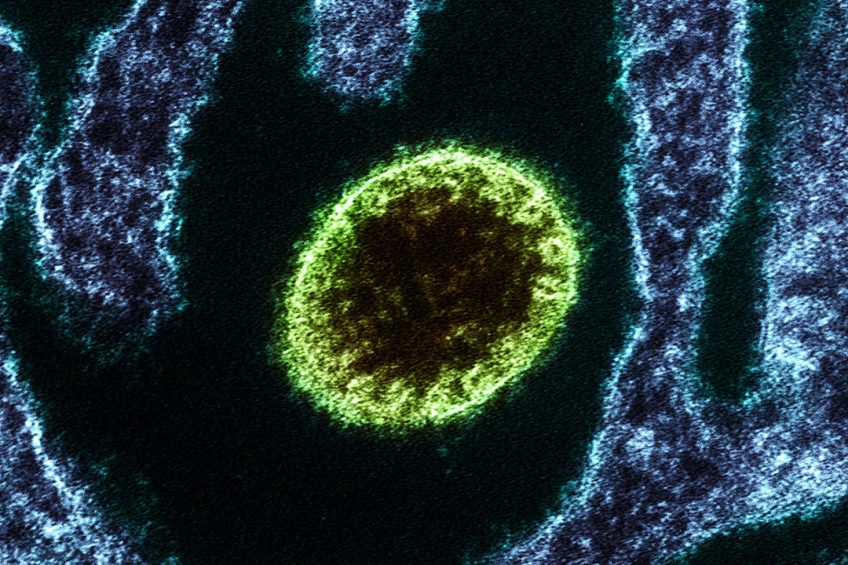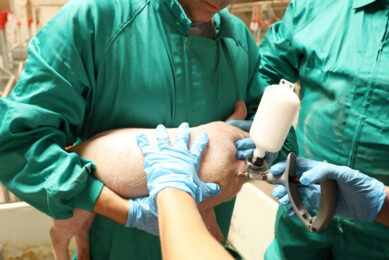New Nipah vaccines show promising results in pigs

A set of newly developed potential vaccines against Nipah virus generate a strong immune response in pigs, which is promising news for protection against the virus.
That was the message of newly published research in the peer-reviewed titleVaccines, authored by researchers from the United Kingdom, Italy, France and Australia. They did their trials in on vaccines developed by the University of Parma, Italy.
In the UK, The Pirbright Institute participated in the research. In an article on its website, the institute placed the discovery into a wider context: “The promising results suggest the vaccines could protect pigs against Nipah virus infection, which can cause respiratory problems and fatal encephalitis in pigs and humans. By preventing spread of the virus through pig populations, the novel vaccines would also lower the chances of humans contracting the disease.”
Antibody and cellular immune responses in pigs
In the study, published in Vaccines, the team reported that the 2 vaccine candidates generated strong antibody and cellular immune responses in pigs. Since it is thought that both types of immune response are important for protection against Nipah virus, these results provide a solid basis for their further investigation in vaccine development for use in pigs and potentially other species.
To create the vaccines, the scientists genetically engineered bovine herpes viruses (BoHV-4) to deliver Nipah virus proteins to pigs. The team selected the G and F proteins that Nipah virus is known to use to enter cells and facilitate cell-to-cell spread. When presented to the immune system, these proteins trigger a response that prepares the host to fight the infection, the article at the Pirbright website described.
Help for making an ASF virus?
In the article, Pirbright’s professor Simon Graham commented, “We were impressed by the magnitude of the immune responses stimulated by the BoHV-4 vaccines, especially the T cell responses. Our results suggest that BoHV-4 could also be used to make vaccines for other pig diseases where T cell responses are thought to play an important role in protection, such as African Swine Fever virus. This shows great potential for the future of this vaccine delivery system.”
Now that the team have shown the vaccine candidates induce potent immune responses, their next step will be to assess whether this will protect pigs when they are infected with the Nipah virus after receiving the vaccine. A complementary diagnostic test will also be developed that can differentiate between infected and vaccinated animals, which would enable vaccines to be stockpiled and then utilised during outbreaks.

Pig Progress Health Tool
Find out all there is to know about pig health
Nipah virus – from bats to pigs to humans
Nipah virus typically infects bats, but pigs can become infected by consuming fruit contaminated with bat secretions. The virus has a high fatality rate.
Spread of the virus from pigs to humans was responsible for the 1st and most severe human Nipah outbreak in Malaysia during 1998-99, where almost 200 pig farmers died after contracting the virus from infected pigs. The eradication of Nipah from pigs in Malaysia was dangerous and costly, requiring the army to cull almost half of the national herd and costing an estimated US$ 582 million, according to The Pirbright Institute.
The
publication in Vaccines
was authored by Miriam Pedrera, Rebecca K. McLean, Nazia Thakur, Lobna Medfai, Elma Z. Tchilian, Dalan Bailey and Simon P. Graham, The Pirbright Institute, UK; Francesca Macchi, Valentina Franceschi, Luca Russo and Gaetano Donofrio, University of Parma, Italy; Shawn Todd and Glenn A. Marsh,
CSIRO – Australian Animal Health Laboratory
, Geelong, VIC, Australia; Jean-Christophe Audonnet,
Boehringer Ingelheim
, Saint Priest, France; and Keith Chappell, Ariel Isaacs, Daniel Watterson and Paul R. Young,
University of Queensland
, St. Lucia, QLD, Australia.











